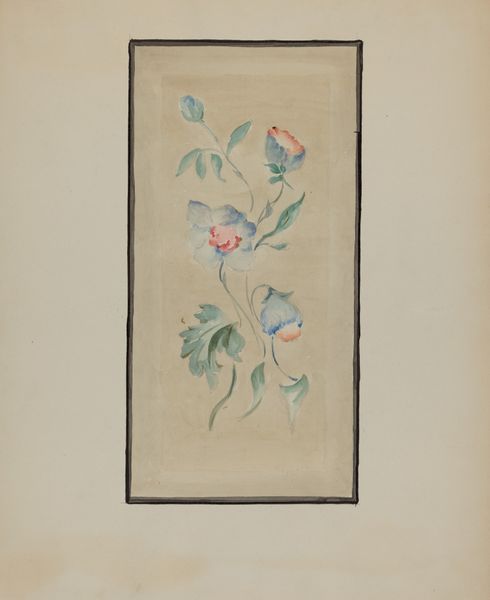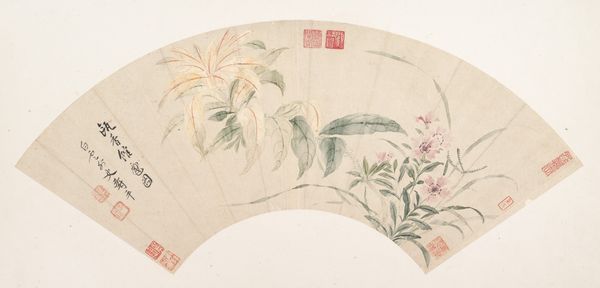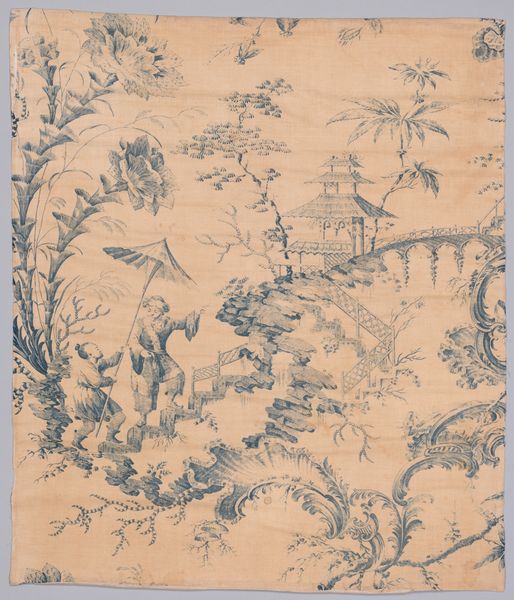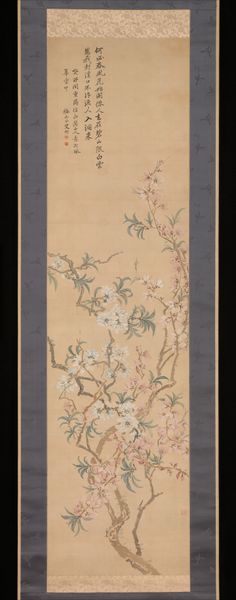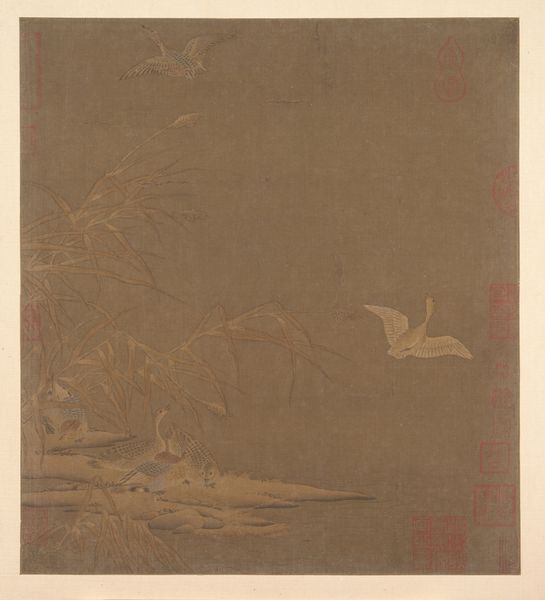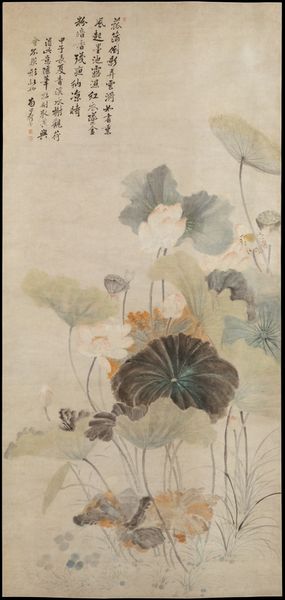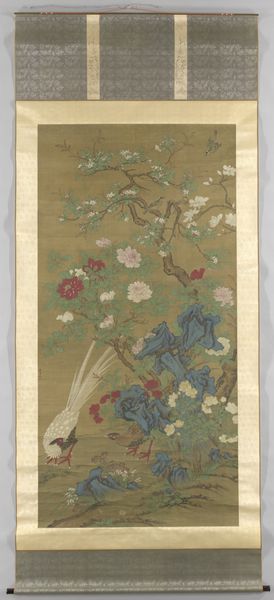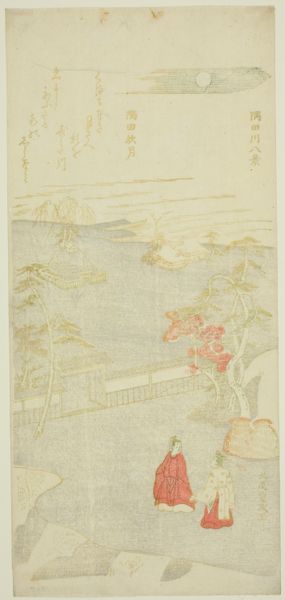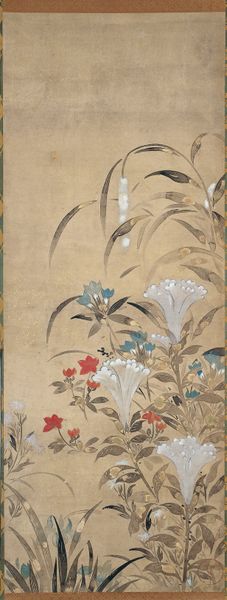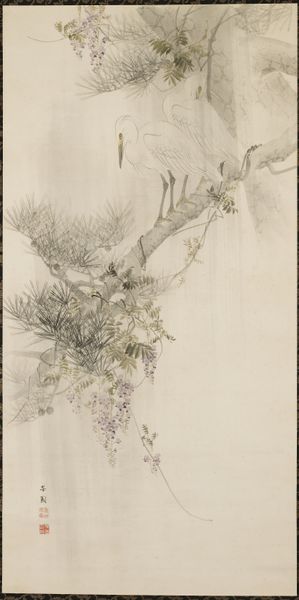
paper, ink
#
ink painting
#
asian-art
#
landscape
#
ukiyo-e
#
paper
#
ink
Dimensions: 73 x 22 1/8 in. (185.42 x 56.2 cm) (image)
Copyright: Public Domain
Curator: Strolling along this gallery, you've now paused before "Egrets," an ink painting on paper likely created sometime in the 18th century. The artist we know as Zhang Yu truly invites contemplation. Editor: My first impression is a sense of stillness, a quiet zen garden encapsulated on paper. The muted palette gives it such an ethereal quality, almost like a memory fading gently. Curator: It's interesting that you pick up on that sense of fading because, technically, the work falls within the landscape tradition, specifically showcasing influences of Ukiyo-e. Considering its age and medium, it speaks to preservation and historical trends within collecting these objects in American museums. Editor: Right, preservation! You can almost smell the musty scent of old paper, the careful hand that brushed the ink, capturing the delicate balance between the egrets and the surrounding flora. It’s like Zhang Yu wasn't just painting what he saw, but also what he felt, his inner response to nature's beauty. Curator: That intuitive experience you describe, that appreciation of subjective feeling is critical here, and echoes larger trends in Chinese painting tradition. Think of these serene natural landscapes as deeply connected to both personal identity, social commentary and the governing structures of patronage during that time. The egrets themselves likely carried a specific symbolic meaning related to status and imperial authority. Editor: The detail in the egrets versus the almost ghostly treatment of the foliage. The contrast really pulls you in. Like a haiku written with a brush, distilling the essence of a moment in time, of an entire world! Curator: It reminds us that landscapes in East Asian art weren't just pretty pictures. They reflect power dynamics, artistic training, and evolving systems of meaning. How these meanings have shifted through audiences and geography is really an important consideration as we consider the role of museum display. Editor: Thinking of these subtle undercurrents really transforms my understanding. I came in appreciating its aesthetic charm, and now I see this canvas bustling with stories about class, collecting, and canonization! Curator: Indeed. "Egrets" offers more than initially meets the eye. These landscapes continue to teach us about their history and ours.
Comments
minneapolisinstituteofart almost 2 years ago
⋮
After the spread of Buddhist belief in China, the lotus was imbued with religious associations and became known as the sacred flower of Buddhism. The lotus flower blooms above the water, just as Buddha was born into the world but lives above it. The lotus fruits are said to be ripe when the flower blooms, just as the truth preached by Buddha immediately bears the fruit of enlightenment. These Buddhist connections, however, do not fully account for the later, widespread popularity of the lotus in Chinese art. A more general belief at the time associated the lotus, which grows out of mud but is not defiled, with noble purity and unflinching courage.
Join the conversation
Join millions of artists and users on Artera today and experience the ultimate creative platform.

